Health Care System
Health Care System
 Armenia’s health care system features three principal components: the national or “republican” service level, which provides tertiary care hospitals and an epidemiological service; the regional service level, which provides hospitals; and the municipal and community service level, which has primary health care providers. The key components of the system are the large private hospitals. Socially vulnerable and special-status social groups are provided with Medicare, including services for the disabled, children under 18 without parental care, victims of political repression, military personnel, expectant mothers, victims of traffcking, and children under age seven, among other groups. These groups also receive free or discounted medicine.The system is undergoing constant improvement and refnement. Heart surgery, therapy, dentistry and other medical specialties are currently being improved in the country. Implementation of a mandatory medical insurance system began in 2012, which will further boost the development of the healthcare system. During the frst stage of the new system, public offcials will receive insurance as part of a social package provided by the government.
Armenia’s health care system features three principal components: the national or “republican” service level, which provides tertiary care hospitals and an epidemiological service; the regional service level, which provides hospitals; and the municipal and community service level, which has primary health care providers. The key components of the system are the large private hospitals. Socially vulnerable and special-status social groups are provided with Medicare, including services for the disabled, children under 18 without parental care, victims of political repression, military personnel, expectant mothers, victims of traffcking, and children under age seven, among other groups. These groups also receive free or discounted medicine.The system is undergoing constant improvement and refnement. Heart surgery, therapy, dentistry and other medical specialties are currently being improved in the country. Implementation of a mandatory medical insurance system began in 2012, which will further boost the development of the healthcare system. During the frst stage of the new system, public offcials will receive insurance as part of a social package provided by the government.
Armenia’s health system has witnessed several notable recent success stories
- The Nork Marash Cardiology Center has become a leading international center for cardio surgery, attracting many patients from CIS and Middle East countries. International assistance (particularly with the involvement of the Armenian Diaspora) and exchanges signifcantly contribute to the upgrading of skills and introduction of new treatment methods.
- Yerevan Medical University trains the largest number of international students in Armenia. Relatively affordable prices and highly-qualifed professionals represent a comparative advantage of the Armenian health care sector, and Armenia has considerable potential to become the leading health care provider in the region.
Table 2. Armenia: Health care system statistics
| Number of physicians of all specialities | 13,591 |
| Number of hospital facilities | 130 |
| Number of ambulatory-policlinic facilities | 504 |
| Number of medium-level medical personnel | 18,649 |
| Number of hospital beds (thousand) | 12.2 |
| Physicians density | 4.02 physicians/1,000 population |
| Hospital bed density | 3.7 beds/1,000 population |
Source: Health Information-Analytic Center NIH MOH RA, Annual Statistical Report 2010
Social safety network and social protection system
Social safety network and social protection system
LABOUR CODE
 Armenia is a full member of the International Labour Organization. The Labour Code complies with international standards and assures the protection of employer and employee rights, and is constantly updated to refect dynamic developments in the world. The Labour Code precludes discrimination of any kind. Workers from the age of 16, and in certain cases from the age of 14, receive full legal rights and protections. The retirement age is 63. Armenian law does not prescribe the composition of labour force employed either by Armenian or foreign companies. The most important social insurance benefts are pensions, unemployment insurance coverage, maternity coverage, and childcare benefts for children under two years old.
Armenia is a full member of the International Labour Organization. The Labour Code complies with international standards and assures the protection of employer and employee rights, and is constantly updated to refect dynamic developments in the world. The Labour Code precludes discrimination of any kind. Workers from the age of 16, and in certain cases from the age of 14, receive full legal rights and protections. The retirement age is 63. Armenian law does not prescribe the composition of labour force employed either by Armenian or foreign companies. The most important social insurance benefts are pensions, unemployment insurance coverage, maternity coverage, and childcare benefts for children under two years old.
Employment contracts may be open-ended or fxed-term. Employees may terminate the employment relationship at any time by giving early notice. The Labour Code permits employers to terminate employment relationships for such reasons as reorganization, unsuitability of the employee for the position held (from two weeks to two months notice is required depending on employee’s length of service), unsatisfactory results during a probation period, failure to adequately perform duties, and loss of trust.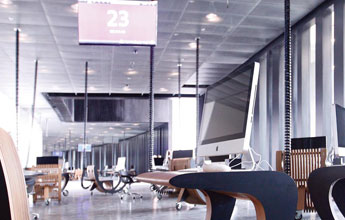 However, care must be taken to ensure that all necessary procedures are properly followed and documented.
However, care must be taken to ensure that all necessary procedures are properly followed and documented.
An employment contract with a pregnant woman may not be terminated from the day on which the employer receives a medical certifcate confrming pregnancy through one month after her maternity leave concludes. Paid maternity leave is required for between 140 and 180 days, depending on the nature of the child delivery. Payment is funded by the Social Security Fund. A mother may also take extended unpaid leave until her child is three years old. Her position must be kept open during this period.
An employee's minimum annual holiday entitlement is 20 working days for those with a fve-day working week and 24 working days for those with a six-day working week. Vacation pay should be paid at least three calendar days before the vacation starts, otherwise the employer will be obliged to provide additional paid vacation leave. Employees who are engaged in part-time studies may be entitled to additional vacation leave.
HUMAN CAPITAL
The higher education system in Armenia consists of 27 state and 41 private higher education institutions operating in Armenia (including eight foreign ones), enrolling more than 60,000 students annually.
Human capital is regarded as the most valuable resource of the country (65% of the population is 17 to 59 years old). The literacy rate is 99.4% for the entire population (male: 99.7% female: 99.2% according to the 2001 census) and school duration (primary to secondary education) is 12 years. According to the UNDP survey of the age group from 13 to 33, over 30% have enough profciency to conduct business in English, which is the third most common language in Armenia (after Armenian and Russian).
SOCIAL SECURITY
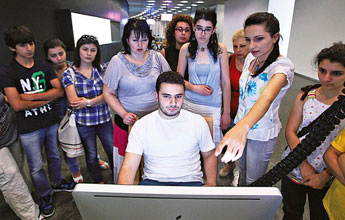 The social security system in Armenia covers pensioners, workers and their dependents for work-related accidents, disability benefts, sickness and maternity benefts, and family allowances. The social protection system of Armenia plays an important role in providing social support to the population and alleviating the poverty.The current state pension system (PAYG means pay-as you-go) of Armenia is based on the principle of inter-generational solidarity. Essentially employees, employers and sole proprietor pay obligatory social contributions to the State Budget, from which pension payments are made. This system is being improved and a multi-pillar pension system will be implemented by January 2014 as a result of the ongoing pension reforms. The existing PAYG system will be complemented by two new pillars: the mandatory and the voluntary funded components. The voluntary component will come into force in 2013 and the mandatory component will enter into force in 2014. Within the framework of the funded component, employees will make contributions from their salaries, which together with State contributions will be transferred to their pension accounts. Pension savings will be invested in eligible securities instruments according to the investment policy defned by the law regulations as well as Pension Fund rules (www.mss.am, www.epension.am, www.abcfnance.am).
The social security system in Armenia covers pensioners, workers and their dependents for work-related accidents, disability benefts, sickness and maternity benefts, and family allowances. The social protection system of Armenia plays an important role in providing social support to the population and alleviating the poverty.The current state pension system (PAYG means pay-as you-go) of Armenia is based on the principle of inter-generational solidarity. Essentially employees, employers and sole proprietor pay obligatory social contributions to the State Budget, from which pension payments are made. This system is being improved and a multi-pillar pension system will be implemented by January 2014 as a result of the ongoing pension reforms. The existing PAYG system will be complemented by two new pillars: the mandatory and the voluntary funded components. The voluntary component will come into force in 2013 and the mandatory component will enter into force in 2014. Within the framework of the funded component, employees will make contributions from their salaries, which together with State contributions will be transferred to their pension accounts. Pension savings will be invested in eligible securities instruments according to the investment policy defned by the law regulations as well as Pension Fund rules (www.mss.am, www.epension.am, www.abcfnance.am).
Infrastructure
INFRASTRUCTURE
Armenia, traditionally a way station along the Great Silk Road, is located at the historic crossroads of Asia and Europe. The country is engaged in the construction of a number of large infrastructure projects to restore its importance as a commercial link between the continents.
RoADs
Armenia’s road network extends nearly 7,749 km as of 2011. The construction of the new North-South highway will enable safe and fast transportation of goods between the Persian Gulf countries and Europe. Upon its completion this road, about 556 km in length, will facilitate the traffc from Armenia's southern border to the Georgian border, and beyond to the ports of the Black Sea.
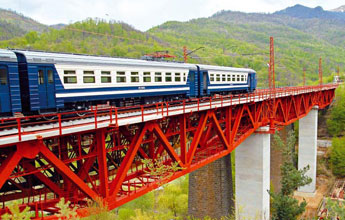 RAIlRoADs
RAIlRoADs
The railroad network currently extends for about 707.4 km, with 69 operating train stations along the way. The modern railroad network is operated by Southern Caucasus Railway (a fully owned subsidiary of Russian Railways/RZD) under 30-year concession agreement. Railroad provides access to Black Sea ports, principally Batumi and Poti. A new rail link to Iran is in the planning stages.
SUBWAY
Yerevan’s Metro system is consists of a single line and a shuttle branch. There are ten stations and the system covers 12 km. Trains run every fve minutes from 6:30 am to 11 pm. The system is used by 60,000 passengers per day. The system runs north-south through underground stations and continues west and south on ground level to stations into the industrial suburbs. Plans are afoot to extend the Metro to Zvartnots International Airport.
Telephone seRVIce
Armenia’s telephone system is equipped for both landline and mobile service. There are more than 600,000 landline subscribers with country code 374. Three mobile operators function in the country: Beeline, VivaCell-MTS and Orange, which offer high-quality connections meeting international standards. Mobile subscribers in 2011 numbered 3.8 million.
InTeRneT
Reliable Internet service is available throughout the country. The Internet service had 380,000 subscribers in 2011. It is available via DSL, fber optic, WiMAX, and other technologies. Mobile operators provide quality Internet connections via 3G and 4G systems, which are available in all regions of the country. Armenia is connected with fber optic cables through Iran and Georgia. Currently the country has seven international portals fve in the North and two in the South, which makes the connection highly sustainable. Armenia’s Internet code is .am. For more information on transportation and communication in the country, please visit www.mtc.am.
RELIABLE INTERNET SERVICE IS AVAILABLE THROUGHOUT THE COUNTRY. THE INTERNET SERVICE HAD 380,000 SUBSCRIBERS IN 2011. IT IS AVAILABLE VIA DSL, FIBEROPTIC, WIMAX, AND OTHER TECHNOLOGIES. MOBILE OPERATORS PROVIDE QUALITY INTERNET CONNECTIONS VIA 3G AND 4G SYSTEMS, WHICH ARE AVAILABLE IN ALL REGIONS OF THE COUNTRY
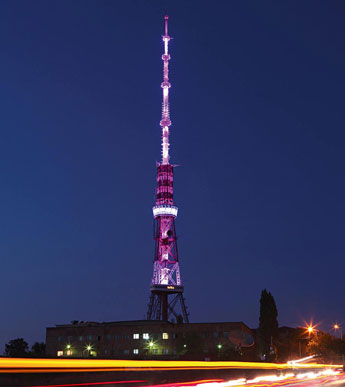
MeDIA
Armenia has two public television networks and 36 privately-owned broadcast television stations with local and nationwide coverage. Public Radio of Armenia is a national, state-run broadcast network that operates alongside 20 privately-owned radio stations. Several major international broadcasts are also available to Armenians. For more information on public TV and radio please visit www.tvradio.am.
EneRgY InfRAsTRUcTURe
Armenia is amply supplied with gas, electricity and water. Gas subscribers number 625,000. The country has a nuclear power plant, two thermal power stations, and more than a hundred hydroelectric operations. Energy prices in Armenia are low and stable.
wATeR sUpplY AnD sAnITATIon
The water supply and sanitation system has been signifcantly upgraded. Numerous projects co-fnanced by international donor agencies are aimed at providing better access to safe, reliable and sustainable water supplies to both urban and rural communities.
AIRpoRTs
Armenia’s two principal airports are “Zvartnots” International Airport in Yerevan, and “Shirak” International Airport in Guymri, both operated by “Armenian International Airports” CJSC (AIA). Zvartnots International is the main gateway to Armenia. It is located 12 km from the center of the city. Both have been modernized extensively since 2002. At Zvartnots, covering 52,000 square meters, a new state-of-the-art passenger terminal has been built, new safety information and check-in systems installed, a new underground parking garage built accommodating more than 800 cars. Zvartnots International is considered the best airport in the South Caucasus, and AIA plans to make it a regional center. Total passenger traffc in 2011 was more than 1.5 million passengers. Currently, 34 international airlines fy direct connections between Yerevan and more than 60 large cities including Paris, London, Frankfurt, Vienna, Dubai, Munich, Amsterdam, Beirut, Istanbul, Moscow and Prague. Shirak International in Gyumri provides services to about 46,000 passengers annually, and features regular fights to Moscow, Rostov-on-don and Sochi. It was recently refurbished and is equipped with a state-of-the-art navigation system, new runways and lights, and other modern improvements.
“ZVARTNOTS” INTERNATIONAL AIRPORT IS CONSIDERED THE BEST AIRPORT IN SOUTH CAUCASUS
CURRENTLY, 34 INTERNATIONAL AIRLINES FLY DIRECT CONNECTIONS BETWEEN YEREVAN AND MORE THAN 60 LARGE CITIES
Macroeconomic Overview
Macroeconomic Overview
Armenia was ranked frst among CIS and CEE countries in GDP per-capita growth rates from 2000 to 2008. Growth slowed at the end of 2008, and actually declined in 2009, primarily due to the effects of the global economic crisis. But in 2010-2011, the economy experienced renewed growth. The industrial structure of the economy has become more diversifed in recent years as well: services and industry now make up 60 percent of GDP, versus 40 percent prior to the crisis. During the post-crisis period the industrial sector has demonstrated the highest growth rates (15.3%) compared to other sectors. Infation from 2000 to 2008 was relatively low (see Figure 5), but increased in 2010 because of higher food prices in international markets, and a decline in local agricultural production. Monetary tightening stabilized price levels in 2011.
|
FIGURE 3. GDP GROWTH (%) AND GDP PER CAPITA (US $), 2001-2014 |
FIGURE 4. GDP BY SECTORS OF ECONOMY, 2011 |
|
FIGURE 5. INFLATION AND EXCHANGE RATE, 2000-2011 |
FIGURE 8. EXPORT AND IMPORT, 2002-2011 |
|
FIGURE 6. INVESTMENTS BY COUNTRIES, 2011 |
FIGURE 7. MAIN TRADE PARTNERS, 2011 |
Total investment grew by 16.2% in 2011, with strong growth in the telecommunications, mining, food processing, IT and R&D, tourism, airport infrastructure, energy generation and distribution sectors. Foreign direct investment (FDI) fows to the Armenian economy mainly originated from Russia, EU member states and the U.S. Armenia’s exports are concentrated in base metals (copper, molybdenum, gold), cut diamonds, and food and beverages (canned and fresh food, brandy). The principal import commodities are natural gas, petroleum, tobacco products, foodstuffs, diamonds, machinery and equipment.
TABLE 1. MAIN MACROECONOMIC INDICATORS, 2008-2012
| 2008 | 2009 | 2010 | 2011 | 2012* | |
|---|---|---|---|---|---|
| GDP (USD billion) | 11.7 | 8.7 | 9.3 | 10.1 | 11.3 |
| GDP per capita (USD) | 3,606 | 2,666 | 2,844 | 3,102 | 3,454 |
| GDP real growth, % | 6.9 | -14.1 | 2.1 | 4,7 | 4.2 |
| Industry | 2.1 | -6.9 | 9.2 | 13.5 | 6.4 |
| Agriculture | 3.3 | 6.0 | -16.0 | 13.7 | 4.0 |
| Construction | 11.3 | -41.6 | 3.3 | -12.5 | 2.5 |
| Services | 4.8 | -3.3 | 4.1 | 5.0 | 4.1 |
| Inflation (year-end) | 5.2 | 6.5 | 9.4 | 4.7 | 4.1 |
| Budget balance (% of GDP) | -0.7 | -7.6 | -5.0 | -3.0 | -3.1 |
| Officially registered unemployment, % (year-end) | 6.3 | 7.0 | 7.0 | 6.2 | 6.2 |
| Investment (USD million) | 1,257.6 | 935.5 | 702.6 | 816.3 | - |
| incl. FDI (USD million) | 1,000.9 | 732.1 | 483.0 | 631.4 | - |
| Exports FOB (USD million) | 1,057.2 | 710.2 | 1,041.1 | 1,329.5 | 1,509 |
| Imports CIF (USD million) | 4,426.1 | 3,321.1 | 3,749.0 | 4,151.4 | 4,367 |
| Foreign Exchange Reserves (USD billion) | 1.41 | 2.00 | 1.87 | 1.96 | - |
| USD/AMD exchange rate (average) | 306.0 | 363.3 | 373.7 | 372.5 | - |
SOURCE: NSS, MOF RA
* Provided fgures are preliminary estimation done at the end of 2011. According to recent estimations the real growth of GDP is considered to be 7%.
Demography and Households
DEMOGRAPHY
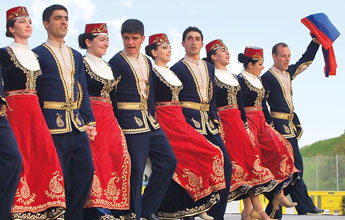 Armenia’s 3.3 million population breaks down ethnically as Armenian 97.9%, Yezidi 1.3%, Russian 0.5%, other 0.3% (2001 census, NSS). The offcial language is Armenian, spoken by about 97.7% of the population. Yezidi is spoken by 1%, Russian by 0.9%, and other languages by 0.4% (2001 census). The religion is predominantly Christian.
Armenia’s 3.3 million population breaks down ethnically as Armenian 97.9%, Yezidi 1.3%, Russian 0.5%, other 0.3% (2001 census, NSS). The offcial language is Armenian, spoken by about 97.7% of the population. Yezidi is spoken by 1%, Russian by 0.9%, and other languages by 0.4% (2001 census). The religion is predominantly Christian.
The population is relatively young, concentrated in cities. The urban population represents 64% of the total, with a full 34% of the total residing in Yerevan. The average age of the population is 35, with about 20% of the population 15 and under. Life expectancy is 71 years for men and 77 for women.
HOUSEHOLDS
 Household incomes, expenditures, and basic food consumption in Armenian households during the 2008-10 period are shown in Figure 1 below. These results emerge from Integrated Household Surveys, illustrating household income by source. We have included the 1st and 10th deciles of the population for comparison purposes. Total consumption expenditures are defned as expenditures on food products, and all services. The structure of consumption expenditures in 2010 is presented in Figure 2. Available data suggest that food constitutes approximately 52% of consumption spending. As we might expect, and as illustrated in the fgures, the total percentage of food expenditures was greater for 1st decile households than for 10th-decile households. Also as might be expected, households in the 10th decile used more services and purchased more non-food products compared to households in the 1st decile.
Household incomes, expenditures, and basic food consumption in Armenian households during the 2008-10 period are shown in Figure 1 below. These results emerge from Integrated Household Surveys, illustrating household income by source. We have included the 1st and 10th deciles of the population for comparison purposes. Total consumption expenditures are defned as expenditures on food products, and all services. The structure of consumption expenditures in 2010 is presented in Figure 2. Available data suggest that food constitutes approximately 52% of consumption spending. As we might expect, and as illustrated in the fgures, the total percentage of food expenditures was greater for 1st decile households than for 10th-decile households. Also as might be expected, households in the 10th decile used more services and purchased more non-food products compared to households in the 1st decile.
FIGURE 1. MONETARY INCOME FOR HOUSEHOLDS OF THE 1ST AND THE 10TH DECILE GROUPS, 2010
FIGURE 2. HOUSEHOLD CONSUMPTION EXPENDITURES OVERALL, AND OF THE 1-ST AND THE 10-TH DECILE GROUPS, 2010
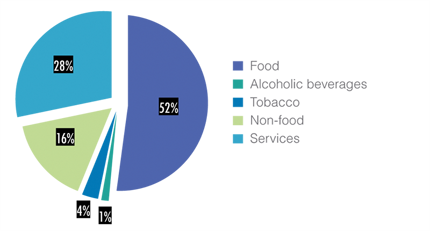 |
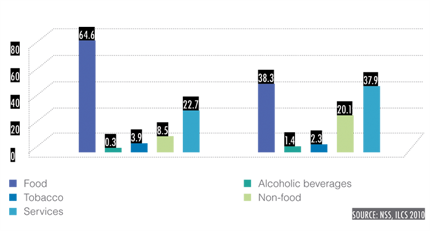 |





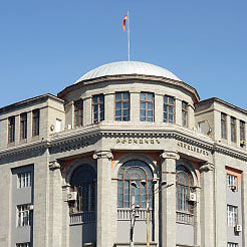
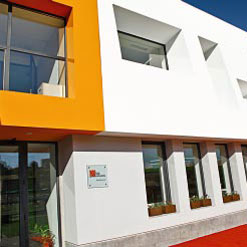






































 Publication
Publication